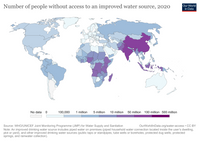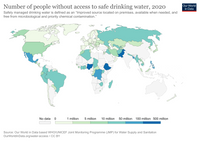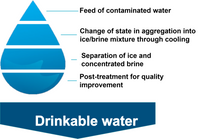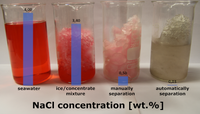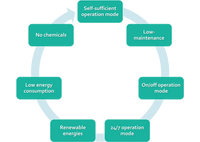Fresh water provision for everyone everywhere
'Water is the most important resource for humans'
The Consequences
People struggle with increasing water shortages on islands and in remote areas. Today's aquifers will not only see a drop in water levels but also an increase in inflowing seawater, thus leading to a salinization of the existing water resource and, therefore, to inedible water.
Direct or indirect persons affected by disasters suffer from a lack of clean water and simultaneously short response time. Additionally, local water resources can be affected by polluted inrushing sewage.
Insufficient water supply on boats and other self-sufficient units to fulfill requirements and needs.
The Problem
The effects of climate change are becoming more and more visible; sea levels are rising, dry periods are becoming longer, and groundwater levels are falling.
More than 5 billion people have no access to hygienically pure water. Furthermore, remote areas have barely to no access to freshwater resources.
One of three countries struggles with water pressure. It means they need more water than is flowing back into their aquifers, which will create problems shortly soon.
Our Solution
A novel water treatment plant using freeze desalination of sea- and wastewater to generate potable water.
In nature, the Arctic ice is formed all the time. Thereby, the seawater freezes, and the liquid inclusions are expelled by gravity and time.
This takes a long time and thus must be accelerated to produce enough potable water for everyone. Therefore, we have developed a patented technology to put this into practice.
Small-Scale Plant
Large-Scale Plant
The Advantages
The technology allows building a plant rather small and transportable and therefore easy-to-use and fast to start up.
Using renewable energies as an electric power source enables one to use the plant self-sufficiently and demand-oriented, for example, in a 24/7 or on/off operating mode.
The focus of the plant design is kept on stability and high quality, thus ensuring low-maintenance time and costs and a possibility for self-repair, if necessary.
During operation, no chemicals or other additional installations are needed, avoiding any waste, besides the brine, and consumption material that is hard to obtain.
The Market
The market of seawater desalination plants covers only 1 % of the whole available market. According to a study, the market will have a CAGR of around 10 % until the end of the decade, and the market value will rise by about $20 bn. With no market leader and almost no market entry barriers, this is a sustainable market concept.
The Mission
I am an engineer in the field of chemical engineering and want to make the world a better place with my skills, experience and network. My goal is to distribute a plant that enables all people to have enough clean water, every day.

